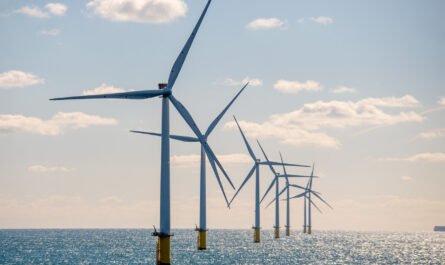Introduction to Solar Energy Tracking
Solar energy has emerged as one of the most viable and sustainable sources of renewable energy. However, one of the key limitations of conventional stationary solar panels is that they only face one direction and cannot track the sun’s movement across the sky throughout the day. This results in loss of energy generation during mornings, evenings, and on cloudy days. Dual axis solar address this issue by automatically rotating the solar panels to maintain an optimal angle to the sun.
What are Dual Axis Solar?
A Dual Axis Solar Tracker is a mechanical structure mounted with solar panels that has the ability to rotate on two axes (north-south and east-west) to continuously face the sun. Compared to fixed-tilt or single axis trackers, dual axis trackers provide more accurate alignment with the sun and maximize energy production. They use sensors and computerized control systems to determine the sun’s position and accordingly adjust the angle and orientation of the solar array throughout the day and year. This allows the panels to absorb direct sunlight for a longer period of time.
Performance Benefits of Dual Axis Tracking
Numerous field tests and simulations have demonstrated that dual axis trackers can significantly boost the output of solar energy systems. Some key performance benefits include:
– Increased Annual Energy Generation: Dual axis trackers are able to capture up to 30% more solar radiation compared to fixed-tilt systems and 10-20% more than single axis trackers. This directly translates to higher annual energy yields.
– Superior Performance in All Weather: They continue generating optimal power even on cloudy or hazy days when the sun is diffused. Single axis trackers suffer losses under such conditions.
– Year-round Optimization: The trackers precisely align systems with the sun’s rays across seasons to produce more electricity throughout the year.
– Enhanced Performance in Specific Locations: Regions with high DNI (direct normal irradiation) such as deserts benefit greatly from dual axis tracking which allows for concentration of direct sunlight.
Types of Dual Axis Solar Trackers
There are two main types of dual axis solar based on their mechanism of movement:
- Tip-Tilt Trackers: These trackers rotate the solar panels around two non-orthogonal axes – azimuth (east-west) and elevation (tilt) angles. They are simpler in design but less accurate in sun tracking.
- 2. Azimuth-Altitude Trackers: Considered superior, these trackers rotate the panels using true orthogonal axes of azimuth and altitude. The altitude arm moves vertically while the azimuth arm rotates horizontally which provides precise positioning and optimal sun exposure.
Key Components of Dual Axis Trackers
Modern dual axis solar employ sophisticated control systems consisting of:
– Solar Position Sensors: Detects the sun’s position using light or radiation sensors for real-time tracking. Pyranometers and solar sensors are commonly used.
– Motors: Electric motors powered by the PV system or separately provide the mechanical force for rotation movement on each axis.
– Controller: Programmed microcontroller receives input from sensors and accordingly instructs the motors to adjust the panel angles throughout the day.
– Structural Framework: Sturdy and robust structure made of metal, wood or composites holds the moving components and bears the weight and stress of rotating panels.
– Tracking Algorithm: Software inside the controller uses a built-in algorithm based on location, date and time to predetermine the sun’s path and calculate optimized tilt angles.
Benefits of Dual Axis Trackers for Solar Projects
For organizations/developers establishing utility-scale or large commercial & industrial solar installations, dual axis trackers deliver significant returns through:
– Lower Levelized Cost of Energy (LCOE): Increased energy yields lower the cost per kWh over the system lifetime. Payback period is 2-3 years less than fixed-tilt systems.
– Maximized Power Plant Capacity: With higher density panel mounting, a dual axis tracker plant can generate more power within the same land area.
– Consistent Revenue Generation: By optimally feeding the grid throughout, trackers provide stable long-term power production under PPAs.
– Reduced Dependence on Subsidies: They improve the business case of solar projects and ability to thrive without policy support in future.
Challenges of Dual Axis Solar Trackers
However, dual axis trackers also present some technical and economic challenges:
– Increased Capital Cost: Initial investment required for the advanced tracking equipment is higher than fixed systems by 15-30%.
– Higher Maintenance Requirements: Moving components like motors and gears require periodic servicing to sustain durability over 25 years lifespan.
– Space and Weight Constraints: Dual axis designs need relatively more space between rows for movement and have greater weight of components. Foundations must support the load.
– Complex Installation Process: Precise installation is needed to setup, align and program the tracker controls as per site conditions. Specialized expertise is required.
Overall, While dual axis trackers involve higher upfront expenses, their long-term energy production and financial benefits make a very compelling case—especially for large commercial and utility projects. With continued technology progress, controls standardization and economies of scale, their costs are expected to further reduce. As solar power assumes a more prominent role in the energy landscape, dual axis solar tracking will play a vital role in optimizing generation efficiency from PV installations worldwide.
*Note:
1. Source: Coherent Market Insights, Public sources, Desk research
2. We have leveraged AI tools to mine information and compile it


